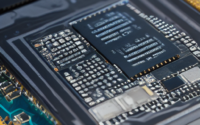Using Robotics and AI for Precision Agriculture
Using Robotics and AI for Precision Agriculture
Introduction:
Precision agriculture has revolutionized the way farming is done by utilizing the latest technologies to increase efficiency, reduce costs, and minimize environmental impact. One such technology that has shown great potential is the integration of robotics and artificial intelligence (AI) in agriculture. In this article, we will explore how robotics and AI are being used in various aspects of precision agriculture and the benefits they bring to the industry.
Automated Crop Monitoring:
One of the key applications of robotics and AI in precision agriculture is automated crop monitoring. Robots equipped with cameras and sensors can collect real-time data on crop health, growth, and nutrient levels. This data is then analyzed by AI algorithms to provide valuable insights to farmers. By monitoring crops automatically, farmers can detect issues such as pest infestations or nutrient deficiencies early on, allowing them to take proactive measures to mitigate the problems.
Precision Irrigation:
Water is a precious resource in agriculture, and optimizing its usage is crucial for sustainable farming. Robotics and AI enable precision irrigation systems that can automatically adjust water supply based on crop needs. Drones equipped with thermal and multispectral cameras can capture data on plant stress levels and soil moisture content. AI algorithms process this data to determine the optimal irrigation schedule and amount, ensuring that crops receive the right amount of water at the right time. This not only conserves water but also improves crop yield and quality.
Autonomous Farming Vehicles:
Robotic vehicles or autonomous tractors have become a game-changer in the field of precision agriculture. These vehicles are equipped with GPS, sensors, and AI algorithms to navigate fields, analyze soil conditions, and perform various farming tasks. They can sow seeds, apply fertilizers, and harvest crops with precision and efficiency. With autonomous farming vehicles, farmers can save time, reduce labor costs, and optimize the use of resources. Moreover, these vehicles can work day and night without fatigue, maximizing productivity.
Crop Scouting and Weed Control:
Scouting for pests and identifying weeds manually can be a time-consuming and labor-intensive task. Robotics and AI offer a solution by automating crop scouting and weed control. Drones equipped with advanced imaging technologies can capture high-resolution images of fields, allowing AI algorithms to analyze them and identify pest infestations or weed hotspots. With this information, farmers can deploy targeted treatments, reducing the need for broad-spectrum pesticides and herbicides. This approach not only saves time and resources but also minimizes the environmental impact of farming.
Predictive Analytics for Yield Optimization:
Predictive analytics, powered by AI, play a vital role in optimizing crop yield. By analyzing historical weather data, soil conditions, and crop characteristics, AI algorithms can make accurate predictions on crop yield potential. Farmers can use this information to make informed decisions regarding seed selection, planting strategies, and nutrient management. Predictive analytics also help farmers anticipate and mitigate potential yield-limiting factors, such as extreme weather events or pest outbreaks. This proactive approach leads to higher yields, better resource allocation, and improved profitability.
Challenges and Future Directions:
While the integration of robotics and AI in precision agriculture offers significant benefits, there are still challenges to overcome. One major challenge is the high upfront cost of implementing these technologies. However, as the technology advances and becomes more widespread, the cost is expected to decrease. Another challenge is the need for skilled personnel who can operate and maintain these complex systems. Addressing these challenges will require investment in training and education. Additionally, data security and privacy concerns need to be addressed to ensure the integrity of the collected data and protect farmers’ information.
Conclusion:
The use of robotics and AI in precision agriculture is transforming the way farming is done, leading to increased efficiency, reduced costs, and sustainable practices. Automated crop monitoring, precision irrigation, autonomous farming vehicles, crop scouting and weed control, as well as predictive analytics, are just a few applications of this technology. While there are challenges, the future of precision agriculture looks promising with the continued advancements in robotics and AI. By harnessing these technologies, farmers can achieve higher crop yields, conserve resources, and contribute to a more sustainable agriculture industry.

